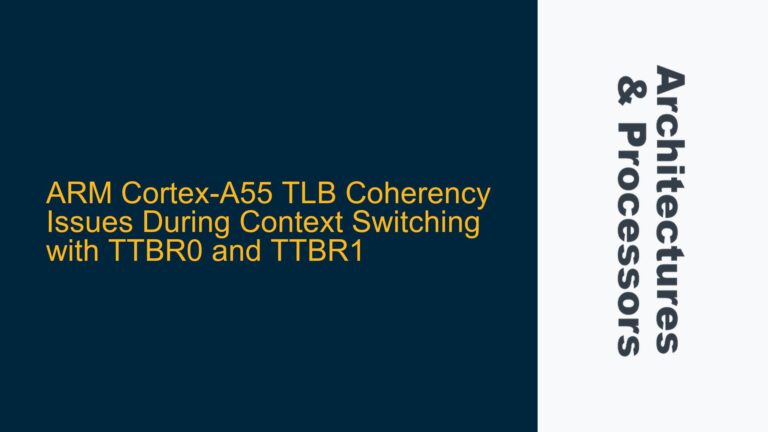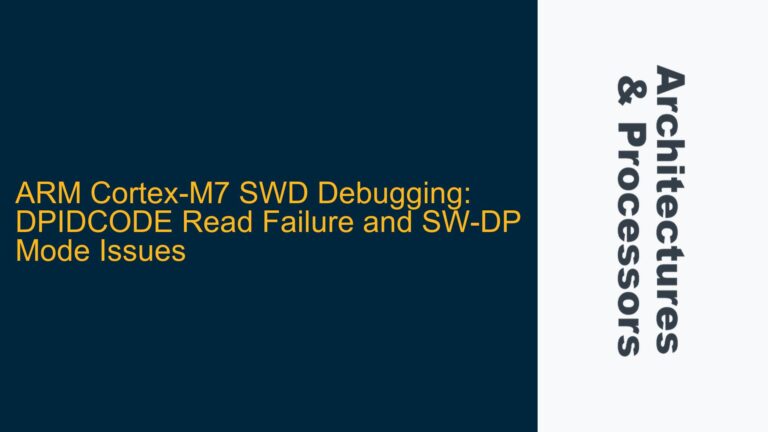ARMv-A Base RevC AEM FVP GIC Implementation Details
The ARMv-A Base RevC AEM FVP (Fixed Virtual Platform) is a versatile simulation environment used for developing and testing ARM-based system-on-chip (SoC) designs. One of the critical components in any ARM-based SoC is the Generic Interrupt Controller (GIC), which manages interrupt handling across the system. The GIC is responsible for routing interrupts from peripherals and other sources to the appropriate CPU cores, ensuring efficient and timely handling of events. Understanding the specific GIC implementation in the ARMv-A Base RevC AEM FVP is crucial for system architects and verification engineers, as it directly impacts interrupt handling, system performance, and software compatibility.
The ARMv-A Base RevC AEM FVP does not implement a specific GIC IP block like the GIC-400, GIC-500, or GIC-600. Instead, it provides a configurable GICv3 model that can emulate various GIC features and versions. This flexibility allows users to tailor the GIC implementation to their specific needs, whether they are developing software, testing hardware, or validating system-level designs. The GICv3 model in the FVP supports a range of features, including GICv2 compatibility, GICv4.1 functionality, and advanced interrupt handling mechanisms.
The GICv3 model in the ARMv-A Base RevC AEM FVP is highly configurable through parameters that can be set during initialization. These parameters allow users to enable or disable specific GIC features, such as GICv2-only mode or GICv4.1 support. Additionally, the FVP provides detailed device tree source (DTS) files that describe the GIC configuration, including memory-mapped registers, interrupt routing, and compatibility information. By analyzing these DTS files, users can gain insights into the GIC implementation and ensure that their software and hardware designs are compatible with the FVP’s GIC model.
GIC Configuration Parameters and Device Tree Source (DTS) Analysis
The ARMv-A Base RevC AEM FVP provides several configuration parameters that allow users to customize the GIC implementation. These parameters can be accessed using the --list-params option when launching the FVP. Some of the key GIC-related parameters include:
gicv3.gicv2-only: This parameter determines whether the GICv3 model should operate in GICv2-only mode. When set to1, the GICv3 model emulates a GICv2 system, which is useful for testing software that is designed for older GIC versions. The default value is0, indicating that the GICv3 model operates in its native mode.has-gicv4.1: This parameter enables or disables GICv4.1 functionality. GICv4.1 introduces advanced features such as direct injection of virtual interrupts, which can improve the performance of virtualized systems. The default value is0, meaning that GICv4.1 functionality is disabled by default.
The device tree source (DTS) files provided with the ARMv-A Base RevC AEM FVP offer additional insights into the GIC implementation. The DTS files describe the hardware configuration of the platform, including the memory-mapped registers and interrupt routing for the GIC. For example, the following DTS snippet from the Linux kernel source code describes the GIC configuration for the ARMv-A Base RevC AEM FVP:
gic: interrupt-controller@2f000000 {
compatible = "arm,gic-v3";
#interrupt-cells = <3>;
#address-cells = <2>;
#size-cells = <2>;
ranges;
interrupt-controller;
reg = <0x0 0x2f000000 0 0x10000>, // GICD
<0x0 0x2f100000 0 0x200000>, // GICR
<0x0 0x2c000000 0 0x2000>, // GICC
<0x0 0x2c010000 0 0x2000>, // GICH
<0x0 0x2c02f000 0 0x2000>; // GICV
interrupts = <GIC_PPI 9 IRQ_TYPE_LEVEL_HIGH>;
its: msi-controller@2f020000 {
#msi-cells = <1>;
compatible = "arm,gic-v3-its";
reg = <0x0 0x2f020000 0x0 0x20000>; // GITS
msi-controller;
};
};
In this DTS snippet, the compatible property indicates that the GIC implementation is based on the GICv3 architecture. The reg property specifies the memory-mapped registers for the GIC Distributor (GICD), Redistributor (GICR), CPU Interface (GICC), Virtual CPU Interface (GICH), and Virtual Interface Control (GICV). The interrupts property defines the interrupt lines connected to the GIC, while the its node describes the Interrupt Translation Service (ITS), which is used for message-signaled interrupts (MSIs).
Another example from the Morello FVP DTS file shows a GIC implementation that is compatible with both the GIC-600 and GICv3 architectures:
gic: interrupt-controller@2c010000 {
compatible = "arm,gic-600", "arm,gic-v3";
#address-cells = <2>;
#interrupt-cells = <3>;
#size-cells = <2>;
ranges;
interrupt-controller;
};
In this example, the compatible property includes both arm,gic-600 and arm,gic-v3, indicating that the GIC implementation supports features specific to the GIC-600 IP block while maintaining compatibility with the GICv3 architecture. This dual compatibility allows the FVP to emulate a wide range of GIC implementations, making it a versatile tool for system development and verification.
Troubleshooting GIC Configuration and Feature Compatibility
When working with the ARMv-A Base RevC AEM FVP, it is essential to ensure that the GIC configuration aligns with the requirements of your software and hardware designs. Misconfigurations or incompatibilities can lead to issues such as unhandled interrupts, incorrect interrupt routing, or performance bottlenecks. Here are some troubleshooting steps and solutions to address common GIC-related challenges:
-
Verifying GIC Version and Features: Before starting your development or testing process, verify that the GIC version and features enabled in the FVP match your requirements. Use the
--list-paramsoption to check the current GIC configuration and adjust the parameters as needed. For example, if your software is designed for GICv2, ensure that thegicv3.gicv2-onlyparameter is set to1. If you require GICv4.1 functionality, enable thehas-gicv4.1parameter. -
Analyzing Device Tree Source (DTS) Files: The DTS files provided with the FVP offer valuable insights into the GIC implementation. Carefully review the
compatible,reg, andinterruptsproperties to ensure that the GIC configuration aligns with your expectations. If necessary, modify the DTS files to reflect the desired GIC configuration, and regenerate the device tree blob (DTB) for use in the FVP. -
Testing Interrupt Handling: To validate the GIC configuration, conduct thorough testing of interrupt handling in your software. Use test cases that generate interrupts from various sources, such as peripherals, timers, and software-generated interrupts. Monitor the interrupt handling process to ensure that interrupts are routed correctly and handled in a timely manner. If you encounter issues, use debugging tools to trace the interrupt flow and identify potential bottlenecks or misconfigurations.
-
Leveraging ARM Trusted Firmware (TF-A): The ARM Trusted Firmware (TF-A) provides a GIC driver that supports various GIC implementations, including GIC-600. If you are using TF-A in your system, review the GIC driver source code to understand how it interacts with the GIC hardware. Use the TF-A GIC driver as a reference for implementing your own GIC support or for troubleshooting GIC-related issues.
-
Consulting ARM Documentation: ARM provides extensive documentation on GIC architectures, including the GICv3 and GICv4 specifications. Refer to these documents to gain a deeper understanding of GIC features, register layouts, and interrupt handling mechanisms. The ARM Technical Reference Manual (TRM) for your specific CPU and GIC implementation is also a valuable resource for resolving GIC-related issues.
By following these troubleshooting steps and leveraging the available tools and documentation, you can ensure that the GIC implementation in the ARMv-A Base RevC AEM FVP meets your system requirements and performs as expected. Whether you are developing software, testing hardware, or validating system-level designs, a thorough understanding of the GIC configuration and features is essential for achieving optimal performance and reliability in your ARM-based SoC.






